ANTECEDENTS
The Stories of Us!
"Suddenly all my ancestors are behind me. Be still, they say. Watch and listen. You are the result of the love of thousands.”
― Linda Hogan, Dwellings: A Spiritual History of the Living World
The Women Who Loved A Boy
Katie Boyle Fitzgerald & Edith Jubinville Niquette

eginnings
Two women. Twenty years age difference. One of Irish nationality and the other French. Neighbors. Friends. Their fates entwined forever, uniting the Fitzgerald and the Niquette families and embarking on an ancestral journey of motherhood in their love for a boy—Arthur Edmund Niquette Fitzgerald.
This is their story.
Katie (L) & Edith (R)
circa 1906
%20and%20Edith%20(R)%20circa%201907.jpg)
B
Images of the two women speak of their deep friendship and life at 40 Elm Street in Hatfield MA. Married later in life in 1910, Katie and her husband Richard Fitzgerald had no children and lived downstairs in their own home. Edith and her husband Evroul Niquette were young, marrying in 1909 and renting upstairs with their growing family of 4 children—Alfred, Raymond, Arthur, and Frances. In this new century and pre-WW I, women still held the traditional societal role of caring for the family and the household, and these two women kept house, their occupation designation on the 1910 US Census. As for the men, Evroul held many jobs as a laborer, machinist, and a chemist while Richard owned and worked his 26 acres of land.
arriage~Edith

Edith & Evroul Niquette
Wedding 1909
M
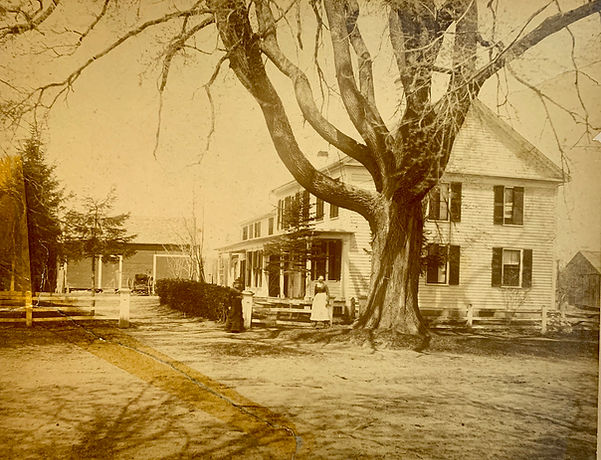
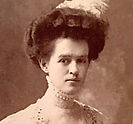

omelife~Katie
H
Catherine "Katie" Boyle married Richard "Raz" Fitzgerald in June 1910. Katie and Richard owned their home on 40 Elm Street in Hatfield, pictured here. In the 1910 History of Hatfield, the Fitzgerald family emigrated to Hatfield from Ireland like many of Hatfield's Irish population due to the failure of the potato crop in the mid-1800s. Katie and Raz were the 1st generation born in the US.
Although Katie and Richard married later in life and had no children of their own, images of them show their close friendship with each other and with Edith and Evroul Niquette. Katie and Edith posed affectionately with each other, and Katie and Raz were often pictured with the Niquette children, especially Arthur. These two families lived, vacationed, and worked together, sharing the ups and downs of life in their friendship.
Close friendships are more than spending time together. Friends care for each other, and they support each other in difficult times. They put their arms around each other and they rest their heads comfortably on each other's shoulders. Katie and Edith had such a friendship. Later, when Edith became ill with tuberculosis, she entrusted the care of her young son, Arthur, to Katie and Richard. Theirs was a lasting friendship, and by then, Katie already loved the little boy.

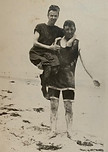
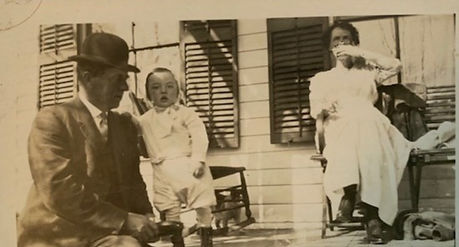
Edith & Evroul (L)
and
Katie & Raz (R)
Westerley RI
1909
Richard & Katie with Arthur in 1917 at 1 year old
40 Elm Street in late 1800s, formerly Porter Homestead
Woman (R, white apron) possibly Temperance McCulloch Morton, mother of Phila Eliza Morton (L, black dress) wife of Jonathan D. Porter
arming
F
In the early 1900s, farming was a harsh livelihood. Tobacco was the main cash crop of the Fitzgeralds, and tobacco farming in rural Hatfield was typical of 1900 agriculture with work in the fields like plowing, planting, suckering, and harvesting done by hand. Besides their duties as keeping house, both women contributed to the cultivation of tobacco for sale to large tobacco companies. "Despite societal restrictions and gendered division of labor, women were absolutely involved in farming and the production [of tobacco]" in small towns in the 20th century.
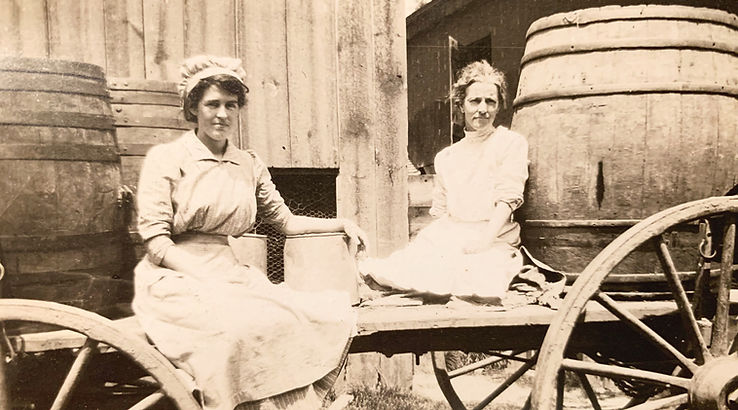
This candid image of Edith and Katie shows them taking a break from their manual labor in harvesting the tobacco crops and depict their lives as early 20th century agrarian women.
Life would change in 1920, though. When Edith was diagnosed with tuberculosis (TB) in early 1920, little would she and her family know that she would not live to see 1921. By May, she was so ill that she was admitted to the Hampshire County Sanatorium in Leeds MA where she would be treated for the next 6 months until December. In 1920, her children Alfred, Raymond, Arthur, and Frances, ranged in age from 10 to 1 years old. During Edith's sanatorium confinement, three of her children were cared for by immediate relatives, and Arthur, who was barely 4 years old, went to live with Katie and Richard Fitzgerald. For these Niquette children, 1920 was a time of upheaval, sadness, and trauma.
D
iagnosis

Arthur
1920
4 years old
reatment
T
Edith's treatment for TB typifies the epidemiology of tuberculosis. For background, "four periods in the treatment of tuberculosis can be identified: pre-1885 period, the fresh air treatment period from 1885 to 1910, the early bacteriologic period from 1910 to 1945, and the chemo-therapeutic period after 1945”. Historically, the building boom of TB sanatoriums expanded considerably after 1910, and Edith was among the hundreds of thousands patients world-wide who were treated in sanatoriums with fresh air and ventilation.

Hampshire County Sanatorium
Top Image circa 1914. Bottom Image circa 1920s.
Courtesy of Forbes Library Special Collections
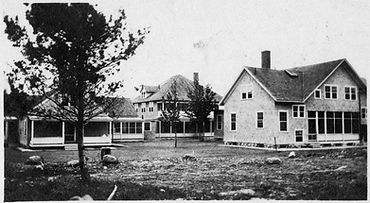
For Hampshire County, the opening of the Hampshire County Sanatorium in Leeds MA in 1914 meant that Western MA natives, like Edith, would have access to local medical care and treatment.
By the 1920s, TB patients and Edith in particular had access to bacteriologic treatment that went beyond the fresh air and ventilation practices of the 1885-1910 sanatorium movement. Edith’s death certificate indicates that the use of laboratory testing helped diagnose her TB. Although testing and examination practices along with the identification of the microorganism that caused TB were milestone discoveries in the treatment and understanding of TB at that time, they were too little, too late for Edith.
Sadly, tuberculosis dominated the first half-century of the 1900s and the short life of Edith Niquette.
D
eath
Edith spent almost 1 year of her life battling tuberculosis. She was diagnosed in early 1920 but by the end of 1920, she was fighting for her life.
Edith came home on December 9th. The next day, she suffered a hemorrhaging of the lungs, lasting only 5 minutes and died immediately according to her death certificate. After a year of battling the disease that claimed her 33rd year of life, 6 months away from her children, and surrounded by her family, her journey on earth ended.
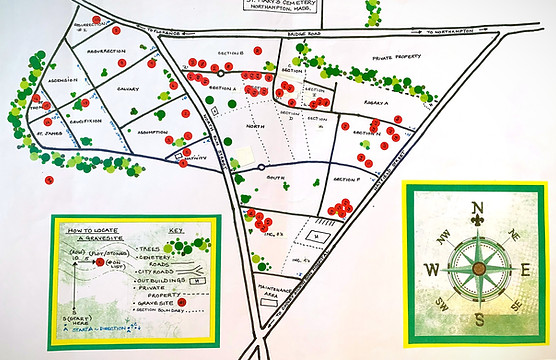
St Mary's Cemetery Northampton MA
Map Design &
Family Plotting
by Karen Mac Iver
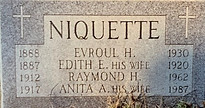
St Mary's Cemetery: Final Resting Place of Edith Niquette
L
oving a boy
For the Niquette children, their routine of the past year living with relatives would remain for the rest of their lives. Arthur continued to live with Katie and Richard Fitzgerald, grew to adulthood, married, and fathered 7 children. During his WW II service, Arthur was legally adopted by the Fitzgeralds and became known from then on as Arthur Edmund Fitzgerald. What was done for legal purposes as he headed overseas to Normandy and the landing on Utah Beach became a fitting tribute to the two mothers who loved him. What remains is a courageous story of two women—Edith & Katie—and their shared motherhood of a boy.

Arthur with
Katie & Richard
1952

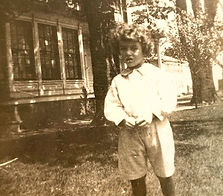

Edith's and Katie's story ends poignantly, captured by a portrait. When you look at this image of Arthur with Katie and Richard Fitzgerald, you notice their smiles. Especially Arthur's. And his arm on his mother. Katie smiles, too, a rare occurrence in photos of that era. Arthur looks out at you and you smile back, thinking how wonderful that he is finding happiness once again. As this story ends, you may wonder what is the measure of a life? Looking at this portrait, the answer is clear—love of family. For expressive Edith, it was giving birth and caring for her children. For the more stoic Katie, it was raising a boy who would become her son. Yes, with time, everything would be alright. And happiness would return.
As antecedents, Edith's and Katie's journey began in friendship and ended in motherhood. Now it belongs to the past. For us, as descendants, we carry within us their ancestral love for a boy. So that their story can be told, and heard, and remembered.
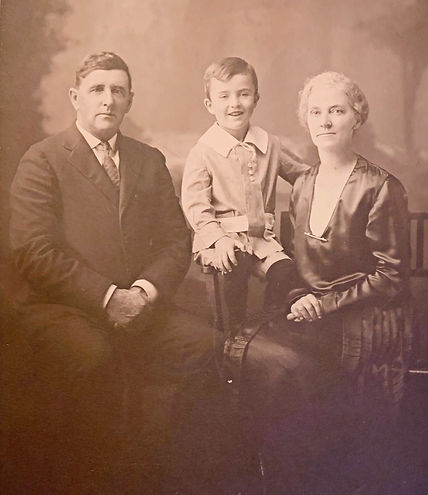
nding
E

Arthur at 2 years, 5 years, 10 years, and HS graduation
REFERENCES
Citations
1. Daniel White Wells, Reuben Field Wells, A History of Hatfield, Massachusetts, in Three Parts, published by F. C. H. Gibbons, Springfield, Massachusetts, 1910. Retrieved from: Hatfield Historical Society, https://hatfieldhistory.weebly.com/resources.html
2. Tobacco Farm Life Museum, Inc.: https://www.tobaccofarmlifemuseum.org/post/farmerettes-farmers-wives-women-s-roles-in-agriculture-past-to-present
3., 4., 5. McBride, D. L. (1998). American sanatoriums: landscaping for health, 1885-1945. Landscape Journal, 17(1), 26–41. Retrieved from UMass Libraries: https://www.jstor.org/stable/43324287
Helpful TB Resources
A Century of Tuberculosis | American Journal of Respiratory and Critical Care Medicine. Retrieved from: https://www.atsjournals.org/doi/full/10.1164/rccm.200402-140oe
Knopf, S. A. (1902). The Tuberculosis Problem in the United States. The North American Review, 174(544), 376–385; http://www.jstor.org/stable/25119218. Retrieved from UMass Libraries: https://www-jstor-org.silk.library.umass.edu/stable/25119218#metadata_info_tab_contents
National Library of Medicine. Revealing Data: Gathering and Collecting Data about TB, CA 100. Retrieved from: https://circulatingnow.nlm.nih.gov/2015/10/07/gathering-and-interpreting-data-about-tuberculosis-in-the-u-s/